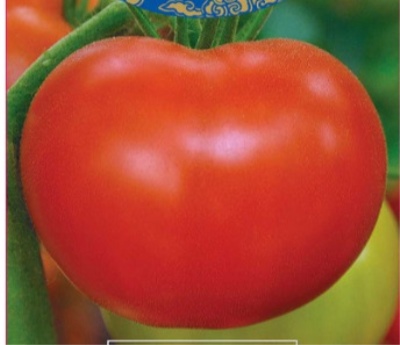
- Authors: Gorshkova N.S., Khovrin A.N., Tereshonkova T.A., Kostenko A.N.
- Year of approval: 2012
- Category: hybrid
- Growth type: indeterminate
- Appointment: fresh consumption
- Ripening period: early
- Ripening time, days: 90-95
- Growing conditions: for open ground, for film greenhouses
- Transportability: Yes
- Bush size: tall
Tomato Coral reef can be grown equally well both in the open field and in an equipped greenhouse. This relatively recently bred hybrid is so undemanding to care for that it quickly won the hearts of gardeners of all skill levels.
Breeding history
The originators of the culture were LLC "Agrofirma POISK" and the Federal State Budgetary Scientific Institution "Federal Scientific Center for Vegetable Growing". Well-known specialists such as Gorshkova, Tereshonkova, Khovrin, Kostenko are declared the authors of the breeding development. The first-generation hybrid was included in the State Register of the Russian Federation almost immediately after the application was filed, namely in 2012. The official synonym for the culture is Coral Reef F1.
Description of the variety
Indeterminate hybrid The coral reef is quite tall, in greenhouse conditions it can grow up to two meters or even higher. The leaves growing on the bush are of medium size, their color is green. The amount of foliage is also average.
The main qualities of the fruit
Coral Reef Tomatoes belong to the group of beef tomatoes. This means that they are large and fleshy, the average weight of each such tomato can be from 300 to 320 grams. Up to 4-6 fruits ripen on one brush, which gives a high yield.
The shape of the berries is round, there is no ribbing, they are slightly flattened. Light green unripe fruits have no spot at all at the stalk. Ripe tomatoes have a bright red skin color. At the same time, it is dense, does not crack. Therefore, tomatoes are well transported.
Taste characteristics
Coral reef tomatoes have excellent taste characteristics, namely, sweet and sour taste with a well-pronounced aroma. However, there is little sugar in them. But many people like it. Vegetables can be used in different ways: for fresh salads and slices, as well as for juicing or mashed potatoes, to complement hot dishes. For obvious reasons, they are not suitable for whole-fruit canning - they do not fit into a jar.
Ripening and fruiting
Coral reef is an early maturing culture. Only 90 or 95 days must pass from sowing seedlings, so that you can already enjoy delicious fruits. At the same time, harvesting can be extended, fruits can be removed from the first days of July until the very frosts. With greenhouse cultivation, fruiting will last until winter.
Yield
On average, from one square meter of plantings, you can get a fairly rich harvest of fruits - 18-19.5 kilograms.
The timing of planting seedlings and planting in the ground
A common technology for growing Coral Reef in the central part of the country is seedling. Seeds are sown about 50-60 days before planting in the ground or greenhouse.

Growing tomato seedlings is an extremely important process, because it largely depends on whether the gardener can harvest at all. All aspects must be taken into account, from seedbed preparation to planting in the ground.
Landing scheme
If the bushes are tied to a trellis, while they are formed into one stem, a compacted planting is possible. In this case, the tomatoes should be placed half a meter apart. This can be a two-row placement. Adjacent double-row plantings should be at a distance of 0.8 m.Another variant of the scheme in one row is 50x80 cm.

Growing and caring
Grown tomatoes are planted in the greenhouse only after the room has warmed up and when the soil remains warm at night (15 degrees above zero). As for landing on open beds, this is possible after the end of the frost, that is, at the beginning of summer. It is very convenient to cultivate tall plants using a trellis. Of course, a garter of powerful tomato bushes is necessary. Coral Reef. The variety is often cultivated in 1 or 2 trunks.




A plant needs different micronutrients at each stage of growth. All fertilizers can be divided into two groups: mineral and organic. Folk remedies are often used: iodine, yeast, bird droppings, eggshells.
It is important to observe the rate and period of feeding. This also applies to folk remedies and organic fertilizers.


Growing regions
Tomato Coral reef is recommended for cultivation in various regions of the country. Most often it is grown in the Central Black Earth Region, as well as in:
- northern;
- northwest;
- central areas;
- Volgo-Vyatsky;
- North Caucasian;
- Middle Volga;
- Nizhnevolzhsky;
- Uralsk;
- West and East Siberian regions;
- in the Far East.

























































































